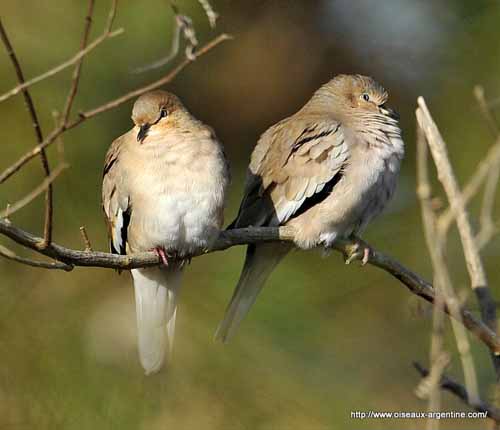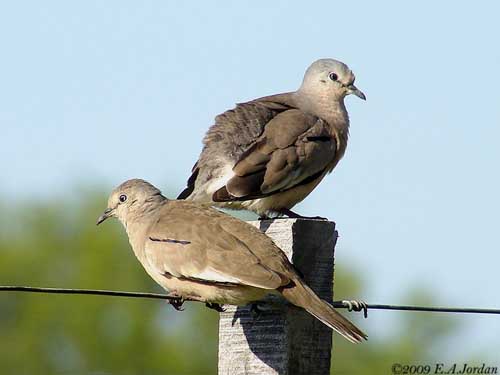
Fr: Colombe picui
All : Picuitäubchen
Esp: Columbina Picuí
Ital : Tortorina picui
Nd: Picui-duif
Sd : Picuimarkduva
Port: Rolinha-picui
Photographers:
Eduardo Andrés Jordan
MIS AVES - AVES DE ARGENTINA
Philippe et Aline Wolfer
GALERIE
Text by Nicole Bouglouan
Sources:
HANDBOOK OF THE BIRDS OF THE WORLD vol 4 by Josep del Hoyo-Andrew Elliott-Jordi Sargatal - Lynx Edicions - ISBN: 8487334229
PIGEONS AND DOVES by David Gibbs, Eustace Barnes and John Cox - Pica Press Sussex - ISBN: 1873403607
BirdLife International (BirdLife International)
Picui Ground-Dove
Columbina picui
Columbiforme Order – Columbidae Family
BIOMETRICS:
Length: 18 cm
Weight: 45-59 g
DESCRIPTION:
The Picui Ground-Dove is a small Columbidae species, mainly found in the arid regions of South America.
The adult male has brownish-grey upperparts and central rectrices, inner wing-coverts and secondaries, whereas central wing-coverts are more pinkish-fawn. The outer rectrices are white.
We can see a blackish-blue stripe crossing the wing-coverts, and a second one over the tertials.
On closed wings, a white patch formed by the white edges of the outer primary wing-coverts is visible, whereas the flight feathers are black.
On the underparts, neck and breast are pinkish-grey. Belly and undertail-coverts are white.
On the head, forehead and throat are whitish, with narrow black stripe on lores, from the bill base to the eye. Crown and nape are grey.
The bill is dark grey to blackish. The eyes are grey. Legs and feet are reddish-pink.

The female has duller plumage with less distinct pinkish areas.
The juvenile is duller and browner, and shows pale-edged feathers. On wing-coverts and breast, feathers have reddish-buff centres.
We can find two subspecies: C.p. strepitans and C.p. picui.
VOICE: SOUNDS BY XENO-CANTO
The Picui Ground-Dove utters series of fairly loud and hollow notes “ca-OOO… ca-OOO… ca-OOO” repeated 3-4 times and followed by a pause of a few seconds.
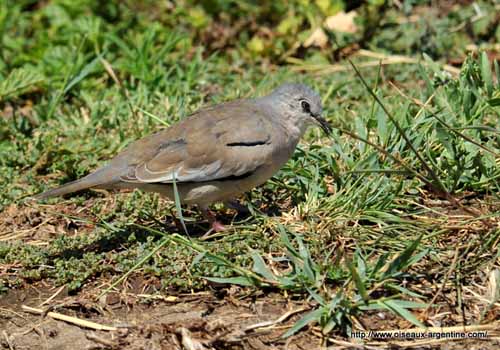
HABITAT:
The Picui Ground-Dove frequents mainly arid and semi-arid areas such as scrub, grasslands and cultivated fields, light woodland and open savannas.
This species can be seen at high elevation throughout the range, usually around 1250 metres, but according to the location, it is visible up to 2500-3000 and even 3700 metres of elevation.
This bird also frequents the woodland edges, plantations, parks and gardens, and is very common in urban areas.
RANGE:
The Picui Ground-Dove of race “strepitans” is found in NE Brazil. The race “picui” occurs in Bolivia, Paraguay and S Brazil, southwards to Uruguay, S Argentina and C Chile. It winters N to E Peru.
BEHAVIOUR:
Like many Columbidae species, the Picui Ground-Dove primarily takes seeds. It feeds on the ground and often in small groups of 25-30 birds, but it also may be found singly or in pairs. They feed in fields, woodlands, scrub and undergrowth. Both grass seeds and crop seeds are taken.
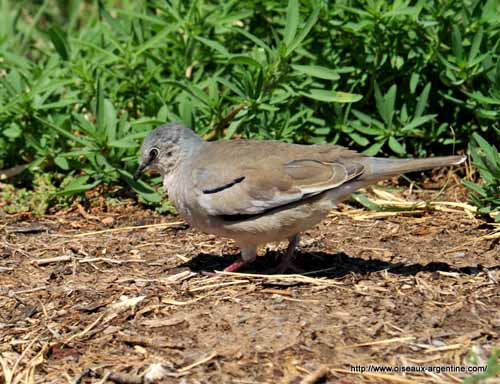
During the breeding season, the male often calls from low perch or from the ground, and all day long. It performs the typical Columbidae displays by bowing in front of the female with slightly drooped wings and sometimes raised tail.
Mutual preening is also observed between both mates, close to each other on the same perch.
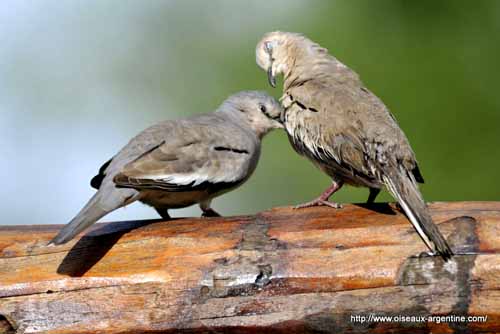
The Picui Ground-Dove is largely resident in its range, but seasonal movements occur according to the food availability, and during the austral winter.
FLIGHT:
Pigeons and doves have highly developed flight muscles and they usually fly strongly and fast.
REPRODUCTION:
The breeding season occurs between October and April in Argentina, whereas the species breeds almost continuously throughout the year in NE Brazil.
As usual, the nest is a fragile structure, a platform of twigs lined with finer materials such as rootlets. It is placed about 1-3 metres or higher above the ground, in dense shrub or thorn tree.
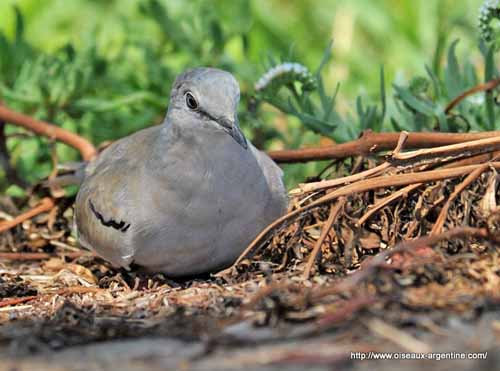
The female lays 2 white eggs. The incubation lasts 11-13 days, shared by both adults. The young fledge 12-13 days after hatching, but they often clamber into the thick vegetation in the surroundings of the nest only 10 days after hatching.
They are fed by both parents with the typical crop milk.
This species often produces two broods per season.
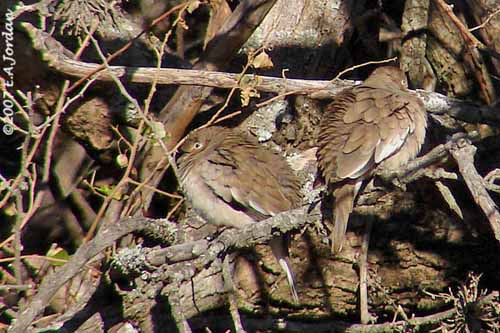
DIET:
The Picui Ground-Dove feeds mainly on seeds such as cultivated grains and “sorghum”, a genus of numerous grasses’ species.
PROTECTION / THREATS / STATUS:
The Picui Ground-Dove is common and widespread in its wide range. In the southern edge of Amazonia, the species is increasing its range and populations, thanks to deforestation and agriculture expansion, two usual threats for numerous other birds’ species.
The Picui Ground-Dove is not currently threatened.
